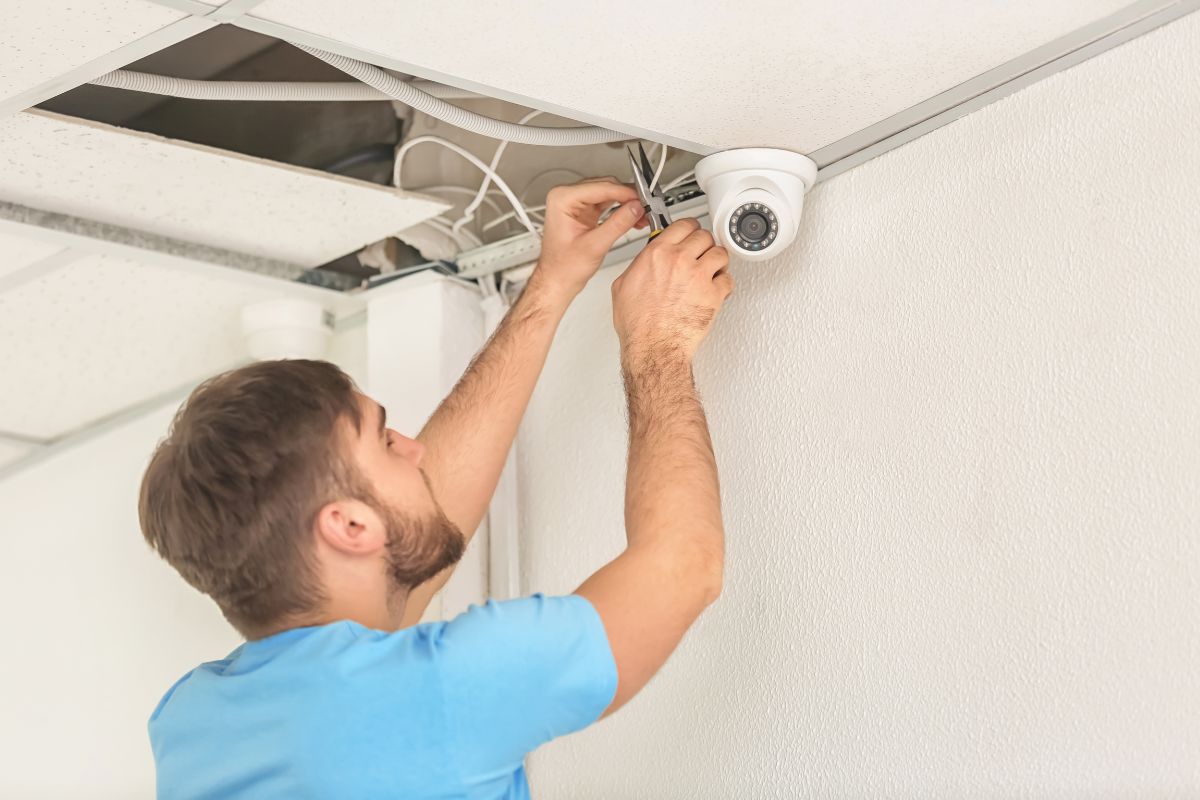It is important to have a reliable security cameras system installed to make sure your home or business is well-protected. They allow you to view your premises at any given time from virtually any place. Installing these high-tech devices is a smart move for deterring burglars.
The mere presence of security cameras on your premises can deter criminals. However, have you ever wondered how these devices work? That’s what we want to help you discover in this article.
Unravel the complexities of security cameras, exploring their types, components, and functions. Gain insights into cutting-edge monitoring and playback features, making these devices indispensable in modern security and investigations.
Security Cameras Provide Video Surveillance
You can best understand how these devices work by first knowing what their purpose is for your home or business.
A security camera not only monitors but also records everything within its field of view. The crucial events they record in real-time provide constant surveillance. They help provide swift responses to emergencies and security threats, proactive deterrence, enhanced investigation, and personalised security.
Types of Security Cameras
Security cameras are available in a wide variety of types. Here are the most popular ones used by homeowners and businesses:
- Indoor & Outdoor Security Cameras: Surveillance cameras are usually tailored for specific environments. You can decide to buy an indoor or outdoor camera or a camera that is designed for both indoor and outdoor environments.
- Wired & Wireless Security Cameras: When looking for security cameras, you can choose between wired and wireless depending on your needs. Each design has its pros and cons. However, wired cameras offer higher-quality images.
Parts & Components of a Security Camera System
A functional security camera is typically part of a system that is normally referred to as a security camera system. The system has multiple parts (including the camera) that work together to record footage. Here are the key components of a security camera system:
- The Camera: It is the main component of the system that captures and records footage. As mentioned earlier, cameras can be indoor/outdoor and wired/wireless.
- Monitoring Station: This is the part of the system that allows you to view the recorded images and footage. You can have a single or multiple monitors.
- Video Recorders: These are devices that help process the data recorded by the cameras for storage and viewing. The two main popular video recorders are Network Video Recorders (NVR) and Digital Video Recorders (DVR).
- Cable & Routers: These are supporting technologies (routers and cables) that allow for a seamless connection of the parts of the camera system.
- Data Storage: A security camera system can have local storage (hard drive, SD card, NVR, or DVR) or cloud-based storage that requires a subscription.
How do They work?
Now that we have covered the fundamentals of security cameras, let’s learn how they work.
Capturing Footage
A security camera’s main function is to capture videos and images within its field of view. They use lenses to direct light onto an image sensor. The image sensor can be a complementary metal-oxide-semiconductor or a charged-coupled device depending on the type of camera used.
Signal Processing
The signal-processing circuitry of the camera converts the electrical signals into a digital image. An accurate representation of the image or object depends on adjusting factors like colour balance, contrasts, and brightness.
Transmission
The video or image captured by the security camera is transmitted to a recording device, such as a monitor for viewing. Digital security cameras simply convert analogue formats to digital ones for viewing and storage. Analogue security cameras directly transmit video signals to a recording device.
Recording & Storage
As stated earlier, a camera system has components for recording and storing data. The camera will use the available components to record and store data locally or on cloud-based servers.
Motion Detection & Alerts
Advanced security cameras come with high-tech features like built-in motion sensors and alarms. Motion sensors can detect movements with some designs that can distinguish human beings from other objects. They trigger an alert that allows you to respond quickly to a potential threat. The alerts with sirens can also help deter threats.
Monitoring & Playback
The latest advancements in surveillance allow users to monitor live feeds through mobile apps. In addition, the apps allow users to play back the recorded videos.
Delve deeper into security camera technology, understanding their varied types and essential components. From wired to wireless, indoor to outdoor, explore the intricate workings of these devices. Learn about the crucial role of monitoring stations, video recorders, cables, routers, and data storage in a comprehensive security camera system.
Uncover the intricate process of capturing footage, signal processing, transmission, and advanced features like motion detection. Stay informed about the latest monitoring and playback options, making security cameras indispensable assets for modern-day safety and investigation.
In Summary
Security cameras are a marvel. The more you learn how they work, the more you will appreciate their importance in society. Nowadays, they do more than just surveillance and deterrence. You can use them for investigations to solve burglary cases. This makes them indispensable assets in the modern-day security landscape.












